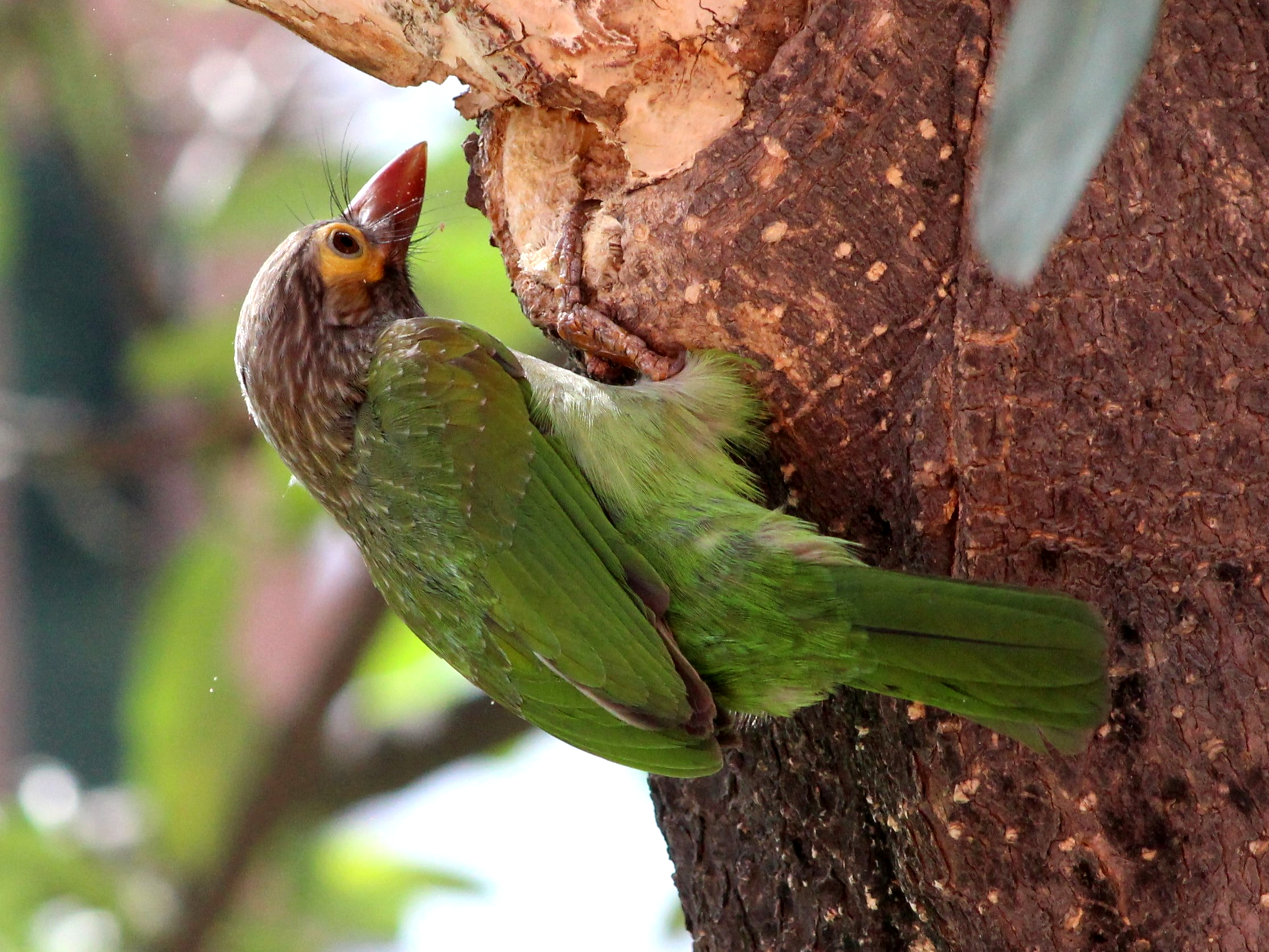Psilopogon Zeylanicus on:
[Wikipedia]
[Google]
[Amazon]
 The Brown-headed barbet (''Psilopogon zeylanicus'') is an
The Brown-headed barbet (''Psilopogon zeylanicus'') is an
 The Brown-headed barbet (''Psilopogon zeylanicus'') is an
The Brown-headed barbet (''Psilopogon zeylanicus'') is an Asian barbet
The Asian barbets are a family of bird species, the Megalaimidae, comprising two genera with 35 species native to the forests of the Indomalayan realm from Tibet to Indonesia. They were once clubbed with all barbets in the family Capitonidae bu ...
species native to the Indian subcontinent
The Indian subcontinent is a list of the physiographic regions of the world, physiographical region in United Nations geoscheme for Asia#Southern Asia, Southern Asia. It is situated on the Indian Plate, projecting southwards into the Indian O ...
, where it inhabits tropical and subtropical moist broadleaf forests
Tropical and subtropical moist broadleaf forests (TSMF), also known as tropical moist forest, is a subtropical and tropical forest habitat type defined by the World Wide Fund for Nature.
Description
TSMF is generally found in large, discont ...
. It is widespread, with its range stretching from the Terai
The Terai or Tarai is a lowland region in northern India and southern Nepal that lies south of the outer foothills of the Himalayas, the Sivalik Hills, and north of the Indo-Gangetic Plain. This lowland belt is characterised by tall grasslands, scr ...
in southern Nepal
Nepal (; ne, नेपाल ), formerly the Federal Democratic Republic of Nepal ( ne,
सङ्घीय लोकतान्त्रिक गणतन्त्र नेपाल ), is a landlocked country in South Asia. It is mai ...
in the north to Sri Lanka
Sri Lanka (, ; si, ශ්රී ලංකා, Śrī Laṅkā, translit-std=ISO (); ta, இலங்கை, Ilaṅkai, translit-std=ISO ()), formerly known as Ceylon and officially the Democratic Socialist Republic of Sri Lanka, is an ...
in the south, encompassing most of peninsular India
India, officially the Republic of India (Hindi: ), is a country in South Asia. It is the seventh-largest country by area, the second-most populous country, and the most populous democracy in the world. Bounded by the Indian Ocean on the so ...
, and listed as Least Concern
A least-concern species is a species that has been categorized by the International Union for Conservation of Nature (IUCN) as evaluated as not being a focus of species conservation because the specific species is still plentiful in the wild. T ...
on the IUCN Red List
The International Union for Conservation of Nature (IUCN) Red List of Threatened Species, also known as the IUCN Red List or Red Data Book, founded in 1964, is the world's most comprehensive inventory of the global conservation status of biol ...
. It is an arboreal species of gardens and wooded country which eats fruit
In botany, a fruit is the seed-bearing structure in flowering plants that is formed from the ovary after flowering.
Fruits are the means by which flowering plants (also known as angiosperms) disseminate their seeds. Edible fruits in particu ...
and insect
Insects (from Latin ') are pancrustacean hexapod invertebrates of the class Insecta. They are the largest group within the arthropod phylum. Insects have a chitinous exoskeleton, a three-part body ( head, thorax and abdomen), three pairs ...
s. It is fairly tolerant of humans and often seen in city parks. It nests in a tree hole, laying 2-4 egg
An egg is an organic vessel grown by an animal to carry a possibly fertilized egg cell (a zygote) and to incubate from it an embryo within the egg until the embryo has become an animal fetus that can survive on its own, at which point the a ...
s. It forages on mangoes, ripe jackfruit, papaya, banana, figs and similar cultivated fruit trees. Its habitat includes urban and country gardens; it tends to eschew heavy forest. It nests in a suitable hole in a tree that it will often excavate. Both sexes incubate the eggs and often communicate with each other using their ''Kura, kura'' calls.
The adult has a streaked brown head, neck and breast, and a yellow eye patch. The rest of the plumage
Plumage ( "feather") is a layer of feathers that covers a bird and the pattern, colour, and arrangement of those feathers. The pattern and colours of plumage differ between species and subspecies and may vary with age classes. Within species, ...
is green. It is long with a large head, short neck and short tail.
Its call is a repetitive ''kutroo…kutroo…kutroo'', but silent in the winter. Others take up the call when one starts.
References
External links
* {{Taxonbar, from1=Q783116, from2=Q26834012 brown-headed barbet Birds of South Asia brown-headed barbet brown-headed barbet